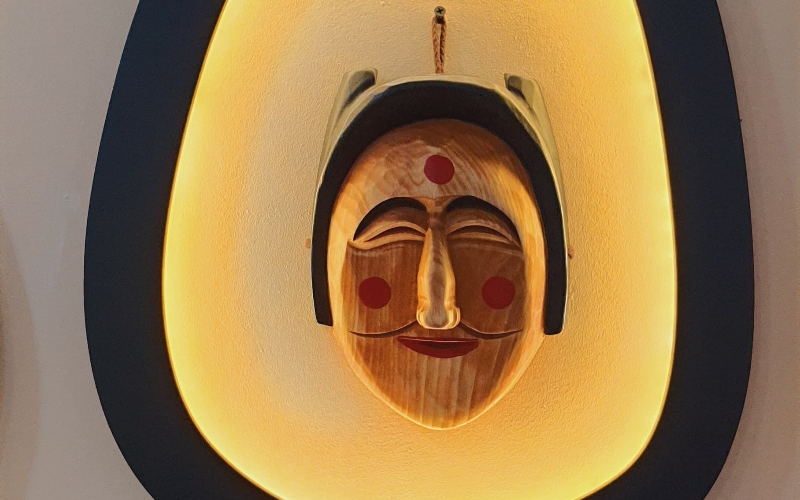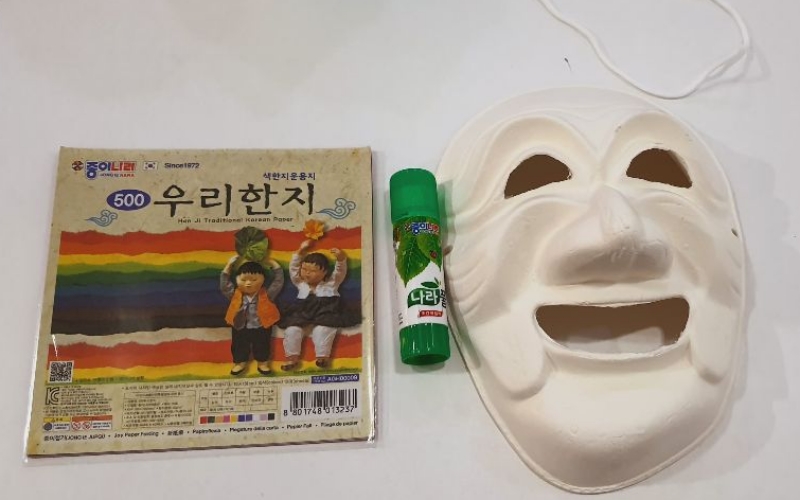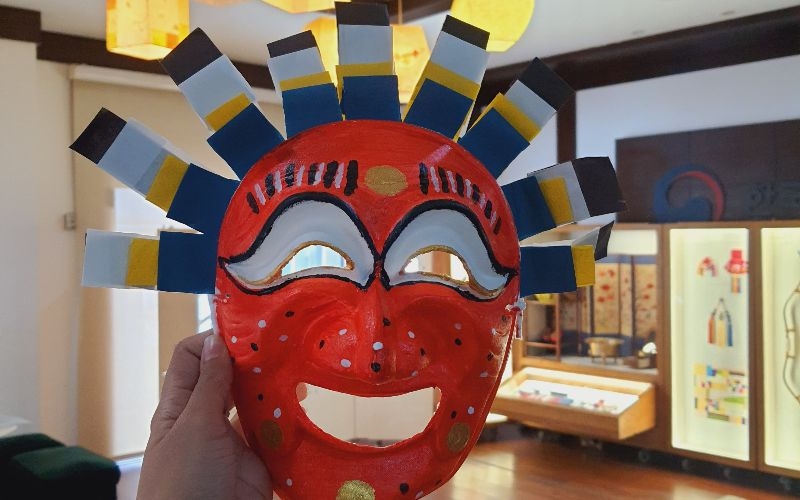- 한국어
- English
- 日本語
- 中文
- العربية
- Español
- Français
- Deutsch
- Pусский
- Tiếng Việt
- Indonesian
By Honorary Reporter Ruaa Nabil Saleh Alwajih from Yemen
Photos = Esraa Ayman Fouad

This mask of a young married woman embodies conventional beauty with an oval face, high nose and small mouth.
The Korean Culture Center (KCC) in Egypt on May 21 hosted an interactive workshop for talchum (traditional mask dance). This time-honored performing art combines drama, music and dance.
Talchum started from the Joseon Dynasty (1392-1910) to mock social norms, share emotions with the community and took part in rituals. Dancers wear colorful costumes and masks with exaggerated features representing characters like nobles, monks or laypeople, often accompanied by traditional instruments like the janggu (slim waist drum) and piri (bamboo flute).
The workshop began with an introduction to the history and significance of talchum.

A mask, glue and Hanji (traditional paper) are among materials distributed at the workshop.
The first part was crafting the masks. Each participant received a mask and Hanji (traditional handmade paper) as everyone set to work. The paper added a tactile and authentic touch to the process, raising appreciation of the traditional materials. The instructors explained the symbolism behind the colors and patterns used in the masks.
Once the masks were finished, it was time to enter the world of talchum. The instructors showed basic steps and movements, emphasizing expression of emotion in each gesture. Laughter and excitement filled the room as people tried to embody the personalities their masks represented.

This mask was made by one of the workshop participants.
After the workshop, the participants took the masks they made home along with a deeper appreciation for Korea's rich cultural heritage.
msjeon22@korea.kr
*This article is written by a Korea.net Honorary Reporter. Our group of Honorary Reporters are from all around the world, and they share with Korea.net their love and passion for all things Korean.